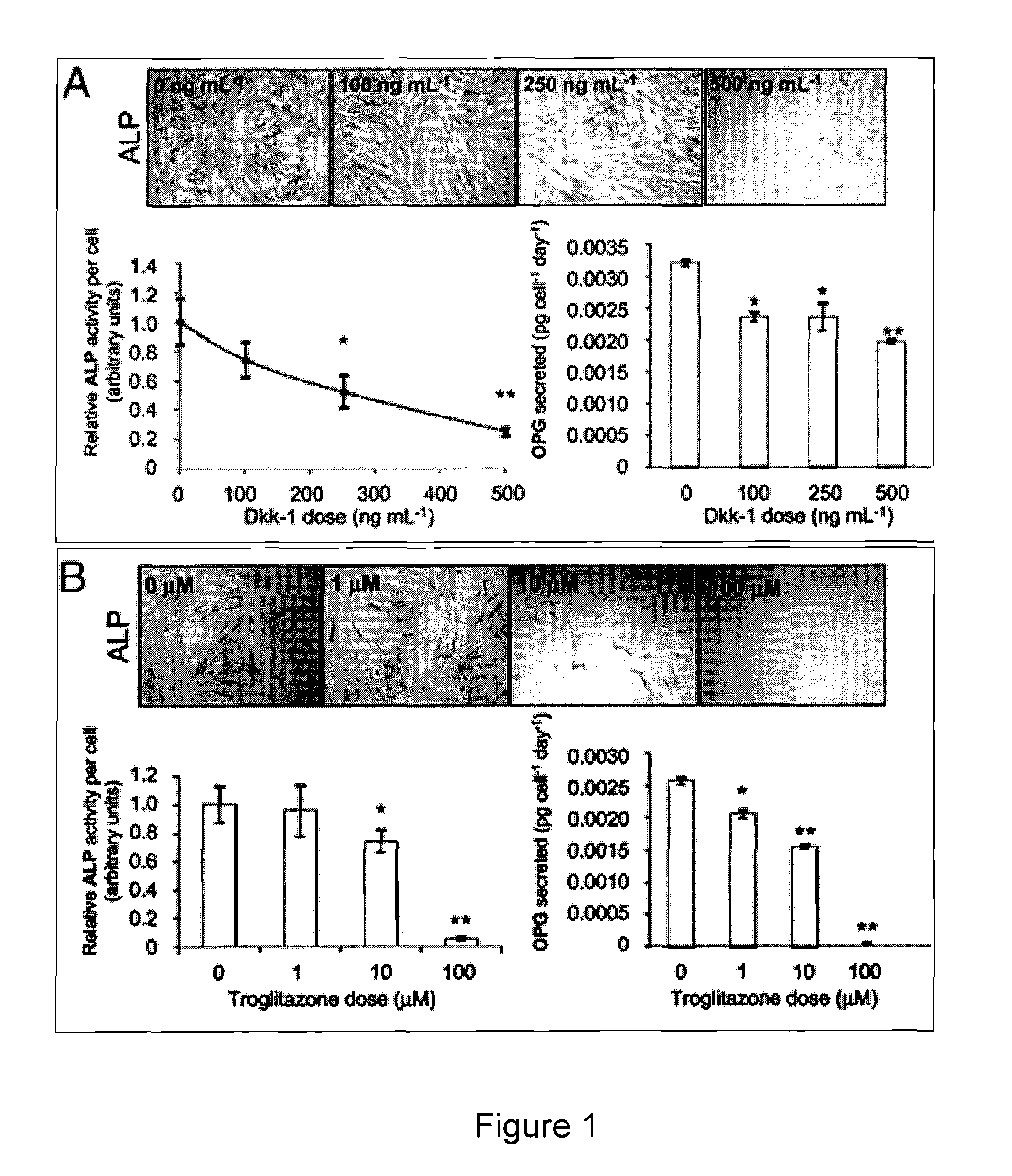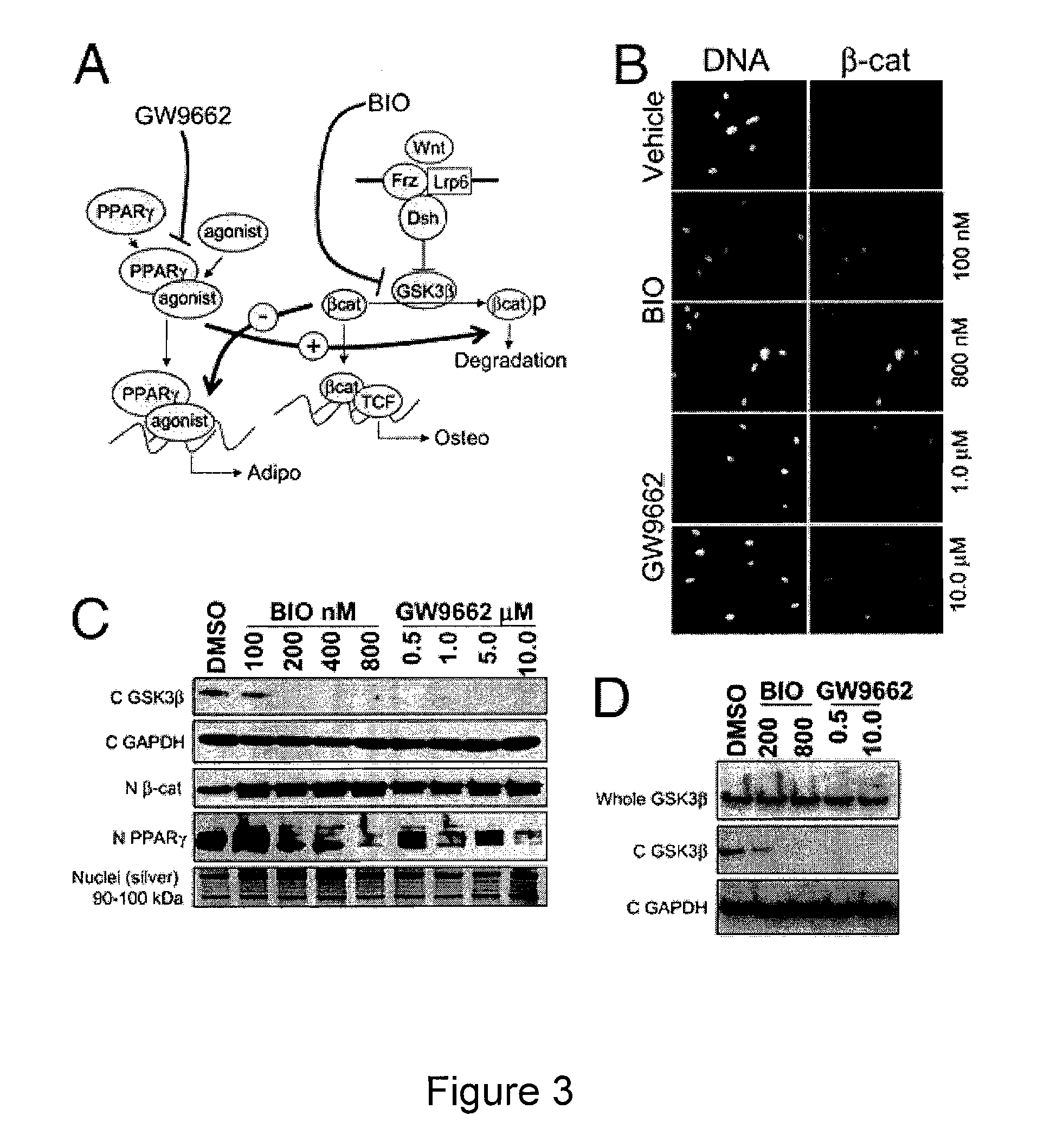Compositions of mesenchymal stem cells to regenerate bone
a technology bone, which is applied in the field of compositions of mesenchymal stem cells to regenerate bone, can solve the problems of serious bone trauma not healing, limited efficacy, and body cannot maintain the material as it does with bone tissue, so as to accelerate bone repair and repair a skeletal injury.
- Summary
- Abstract
- Description
- Claims
- Application Information
AI Technical Summary
Benefits of technology
Problems solved by technology
Method used
Image
Examples
example 1
Pharmaceutical Modulation of Canonical Wnt Signaling in Multipotent Stromal Cells for Improved Osteoinductive Therapy
[0152]Human mesenchymal stem cells (hMSCs) from bone marrow are regarded as putative osteoblast progenitors in vivo and differentiate into osteoblasts in vitro. Positive signaling by the canonical wingless (Wnt) pathway is critical for the differentiation of MSCs into osteoblasts. In contrast, activation of the peroxisome proliferator-activated receptor-γ (PPARγ) mediated pathway results in adipogenesis. Experiments were designed to compare the effects of glycogen-synthetase-kinase-3β (GSK3β) inhibitors and PPARγ inhibitors on osteogenesis by hMSCs. Both compounds altered the intracellular distribution of β-catenin and GSK3β in a manner consistent with activation of Wnt signaling. With osteogenic supplements, the GSK3β inhibitor bromo-indirubin-3′-monooxime (BIO) and the PPARγ inhibitor GW9662 (GW) enhanced early osteogenic markers, alkaline phosphatase (ALP) and oste...
example 2
Novel Biocompatible Matrices for In Vivo Delivery of MSCs for Bone Repair
[0183]In the case of critical size defects, there is a need to regrow bone to reestablish stability and support in the area of injury. Current treatment involves the use of metallic implants, but this treatment sometimes carries with it serious side effects due to the foreign nature of the implant. The following experiments were designed to determine methods for the production of a biocompatible osteoinductive matrix that maintains viability and functionality when administered to the patient.
[0184]hMSCs are multipotent cells with the ability to differentiate into many cell types, including osteoblasts. These cells are usually extracted from adult bone marrow and easily expanded and differentiated in culture using established methods. The differentiation of hMSC's into osteoblasts has been shown to rely upon Wnt signaling and this information is important for their use in repairing bone. Secreted extracellular m...
PUM
| Property | Measurement | Unit |
|---|---|---|
| concentrations | aaaaa | aaaaa |
| diameter | aaaaa | aaaaa |
| diameter | aaaaa | aaaaa |
Abstract
Description
Claims
Application Information
 Login to View More
Login to View More - R&D
- Intellectual Property
- Life Sciences
- Materials
- Tech Scout
- Unparalleled Data Quality
- Higher Quality Content
- 60% Fewer Hallucinations
Browse by: Latest US Patents, China's latest patents, Technical Efficacy Thesaurus, Application Domain, Technology Topic, Popular Technical Reports.
© 2025 PatSnap. All rights reserved.Legal|Privacy policy|Modern Slavery Act Transparency Statement|Sitemap|About US| Contact US: help@patsnap.com



